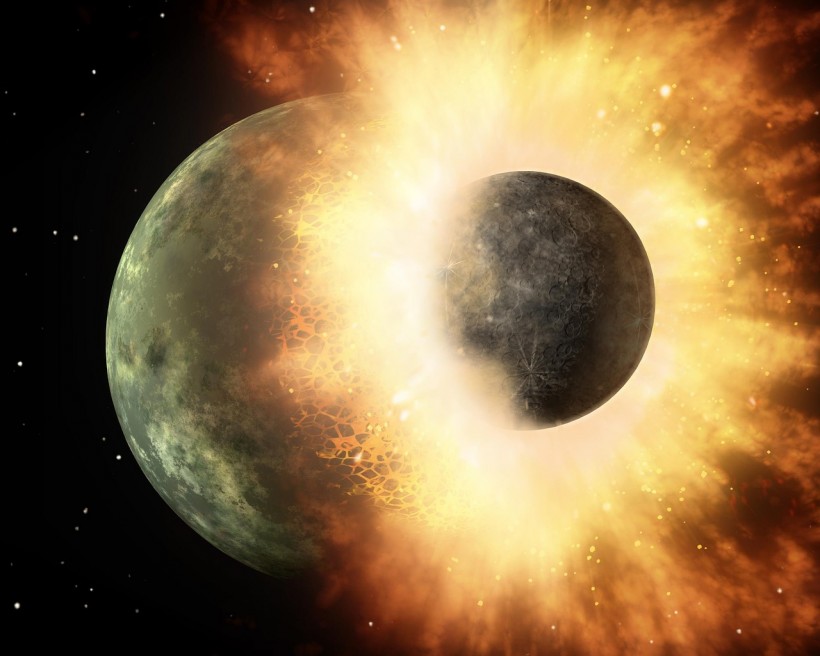A groundbreaking discovery, described in a study published in the journal Nature, reveals the collision of two ice giant exoplanets around a sun-like star. This collision generated intense light and ejected dust plumes, dimming the parent star over time.
The observation came about when an enthusiast noticed an anomaly in the star's light curve, demonstrating increased infrared brightness over a thousand days before visible light fading. Dr. Matthew Kenworthy, a co-lead author, expressed surprise at this unexpected event, which led to a collaborative effort among astronomers to investigate further.

Rare Image Reveals Exoplanets Colliding 1,800 Light-Years Away, Offering Insights into Infrared Surges and Stellar Dimming
Intriguing Afterglow in Space
The star system's enigmatic discovery started when an astrophysics enthusiast stumbled upon an unusual pattern while studying the star's light curve. Roughly three years before the star's visible light dimming, the brightness of the system at infrared wavelengths exhibited a remarkable twofold increase.
Dr. Matthew Kenworthy, a co-lead author affiliated with Leiden University, expressed his astonishment at this unexpected revelation, acknowledging that the phenomenon took him by surprise. The initial dataset of the star's visible light curve, when shared within the astronomy community, piqued the interest of fellow experts. This led to an intensified scrutiny of the star, with a network of telescopes joining forces to investigate further.
The influence of social media in this discovery is remarkable. It was another astronomer's post that drew attention to the star's heightened brightness in the infrared spectrum, an occurrence that transpired over a millennium before the observed optical fading.
The focal point of this research, named ASASSN-21qj, derived its name from the network of telescopes that played a pivotal role in its detection using visible wavelengths. Scientists and even amateur astronomers monitored the star meticulously over the next two years
Their collective research effort yielded a consensus regarding the most plausible explanation for these observations. The infrared radiance, previously detected by NASA's NEOWISE mission, was attributed to the collision of two ice giant exoplanets.
Dr. Simon Lock, another co-lead author from the University of Bristol's Earth Sciences department, clarified their hypothesis, substantiating it with computations and simulations. He expounded that the properties and persistence of the observed incandescent material aligned with expectations from the impact between two celestial bodies of this nature.
READ ALSO: NASA Telescope Finds Asteroid Collision Around Star HD 166191
What's Next After the Planetary Collision?
The planetary collision resulted in a noticeable debris cloud, which was responsible for the dimming observed three years after the initial infrared surge.
Astronomers expect this cloud to gradually disperse along the orbit of the collision remnants, and they anticipate that the scattering of light from this debris may become observable using both Earth-based telescopes and NASA's JWST space telescope.
The astronomical community is eagerly awaiting the future developments of this system. Dr. Zoe Leinhardt, a co-author from the University of Bristol, envisions the possibility of the gathered material coming together to form a series of moons orbiting the newly emerging planet.
This event offers the astronomical community a unique opportunity to study and comprehend the dynamics of exoplanet collisions. As the remnants of this significant impact continue to evolve, astronomers worldwide will remain watchful in the hope of gaining further insights from this extraordinary phenomenon.
RELATED ARTICLE: Exoplanet in Deep Space Is on a Collision Course Toward Destruction as It Orbits Closer With Its Expanding Star
Check out more news and information on Exoplanets in Science Times.














